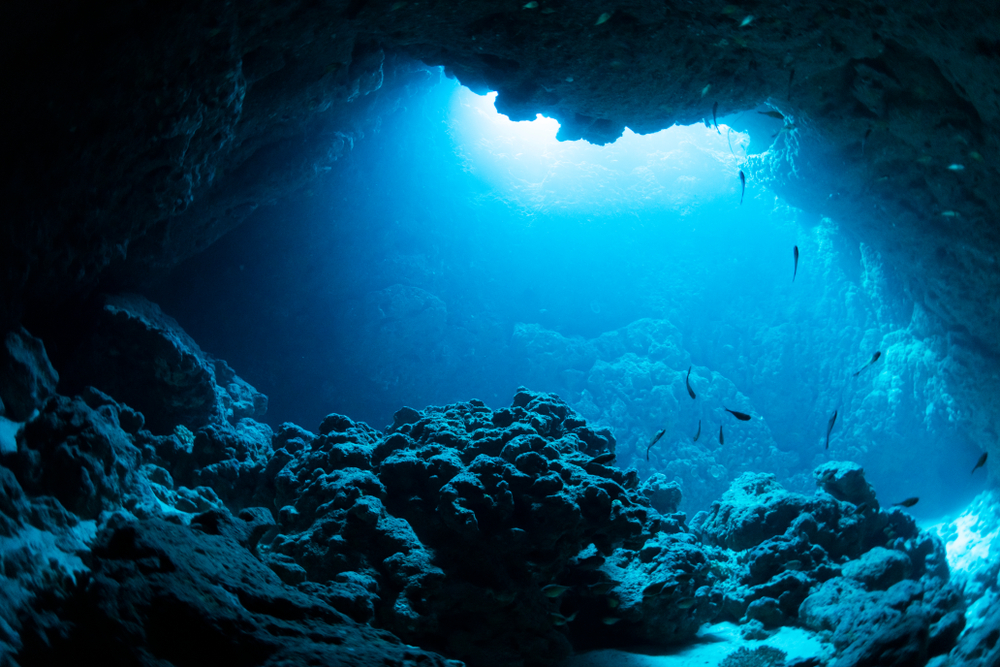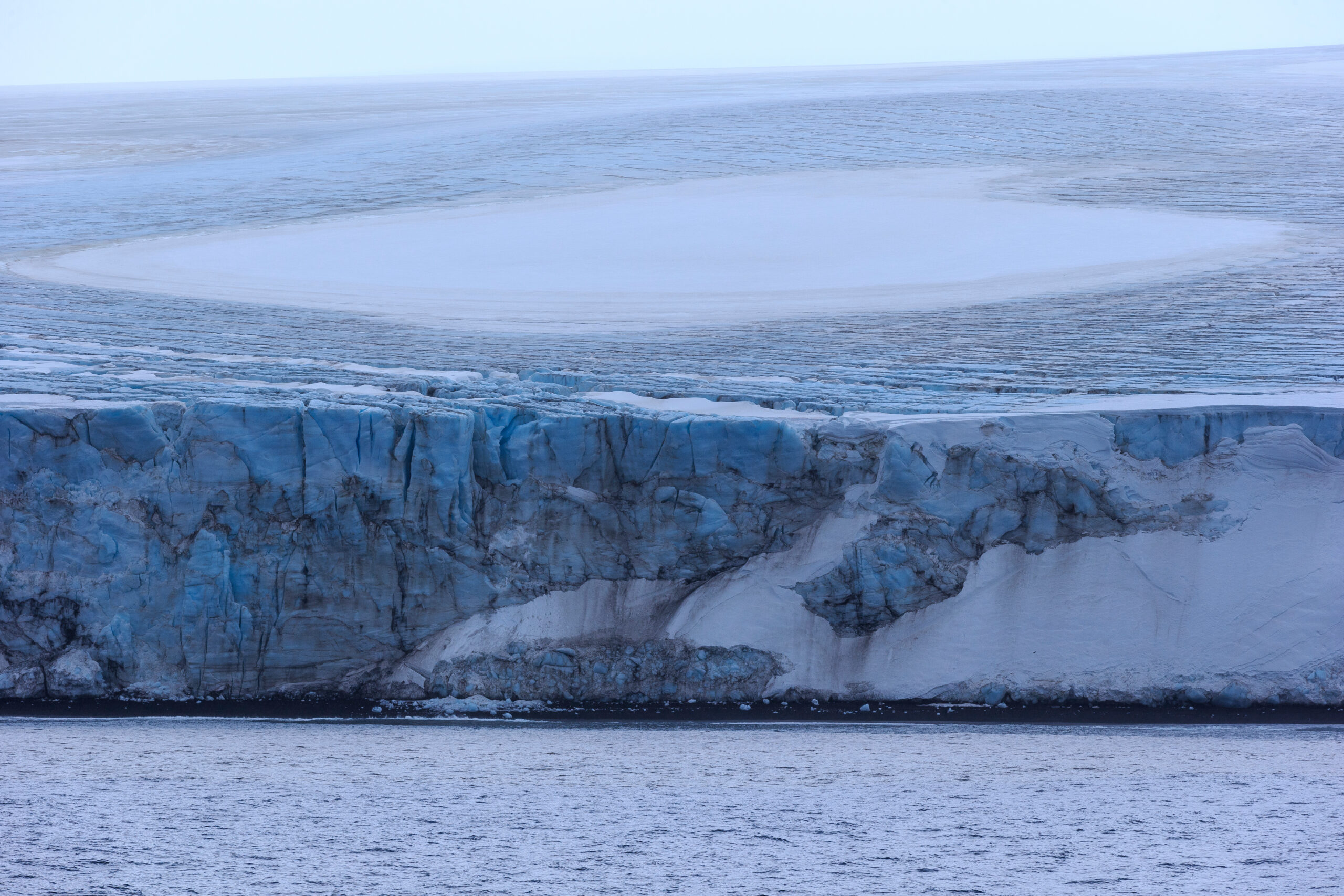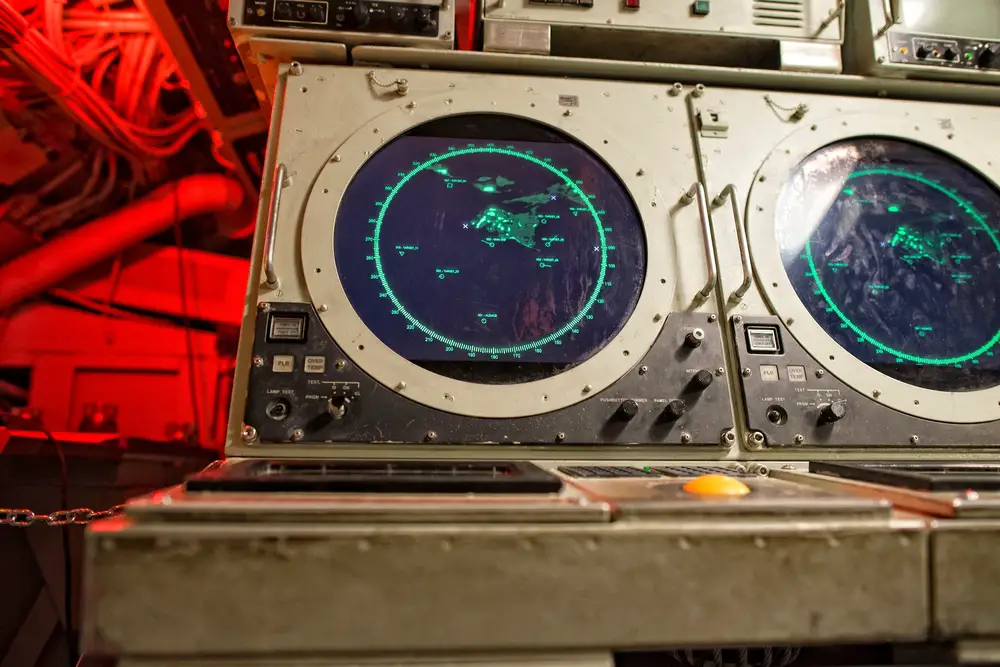The ocean is a vast, mysterious expanse with many secrets beneath its waves. While scientists have made significant strides in understanding marine life, currents, and even the ocean floor, some sounds still leave researchers scratching their heads. These enigmatic noises, from eerie roars to inexplicable hums, continue to puzzle experts and fuel speculation. Join us as we dive into the depths of the ocean and explore 12 mysterious sounds that remain unidentified by scientists.
1. The Bloop: A Colossal Underwater Roar

One of the most famous unexplained sounds is the Bloop. Detected in 1997 by NOAA’s hydrophones, this ultra-low-frequency sound startled scientists with its intensity. The noise was so powerful that it could be heard over 3,000 miles away in the Pacific Ocean. Many theories have been proposed, including the possibility of a massive underwater creature, although no definitive evidence supports this. Interestingly, the sound was tracked to a remote point near H.P. Lovecraft’s fictional city of R’lyeh, further fueling its mythos. Some experts believe it could be the sound of a large iceberg breaking apart underwater. While NOAA has since attributed the sound to icequakes, the sheer magnitude of the Bloop continues to intrigue.
The mystery of the Bloop has not dimmed over the years. The source remains speculative, with no concrete evidence to confirm any one theory. According to NOAA, the explanation of icequakes is the most plausible, but that hasn’t stopped the imaginations of many from running wild. The sound’s eerie nature and enormous reach across the ocean still captivate those interested in the unexplained. With advancements in technology, perhaps one day scientists will finally uncover the true origin of this colossal underwater roar. Until then, the Bloop remains one of the ocean’s most intriguing mysteries. It serves as a reminder of the uncharted territories that lie beneath the sea.
2. Upsweep: The Scary Siren of the Sea

The Upsweep is another compelling sound that has mystified scientists since its discovery in 1991 according to the New Scientist. The NOAA’s Pacific Marine Environmental Laboratory picked up this continuous series of short, ascending noises. It has been recorded seasonally, usually peaking in spring and fall. The sound is thought to emanate from somewhere near volcanic activity in the Southern Pacific Ocean. Some scientists speculate it could be linked to undersea eruptions or hydrothermal vent activity. However, the exact source and cause remain elusive, even after years of analysis.
The idea that volcanic activity might be responsible is plausible, yet no definitive proof exists to confirm this theory. The regularity and seasonality of the Upsweep add layers to its enigma. Could it be a natural phenomenon we have yet to comprehend fully? Or perhaps something entirely different? The Upsweep continues to be a focal point for researchers intrigued by the ocean’s unexplainable sounds. Each recording season brings new hope for clues that might unlock this maritime mystery. Until then, the Upsweep remains an unanswered question echoing through the deep.
3. The Hum: Earth’s Persistent Ocean Enigma

Unlike other oceanic sounds, the Hum presents a global mystery, perplexing both marine and terrestrial scientists alike. It is a continuous low-frequency noise that can be detected worldwide, both in the ocean and on land. Described as a droning sound, it has been a subject of study for decades. Theories about its origin range from seismic activity to the resonance of ocean waves hitting the continental shelves. According to an article in CBS News, recent studies suggest that the Hum might be linked to massive ocean waves, known as microseisms. However, even this theory does not fully explain the Hum’s persistence and pervasiveness.
The Hum has been known to drive some people to distraction, while others remain blissfully unaware of its existence. This variability in human perception only adds to the enigma. Is it simply a natural background noise of our planet, or is there more to it than meets the ear? Despite being studied extensively, the Hum remains one of Earth’s unsolved puzzles. Researchers continue to analyze data in hopes of uncovering the Hum’s true origin. As the search for answers continues, the Hum quietly resonates in the minds of those who seek to understand it.
4. The Whistle: The Ocean’s Phantom Siren

In 1997, scientists recorded a mysterious sound known as the Whistle, which continues to baffle researchers today. This sound, characterized by its high pitch and fleeting nature, was detected by underwater microphones in the Pacific Ocean. Unlike other mysterious ocean sounds, the Whistle has a distinctiveness that sets it apart, giving rise to numerous theories about its origin. Some conjecture it might be linked to marine life, possibly an unknown species communicating in an unusual frequency. Others suspect it could originate from underwater volcanic activity, but no definitive evidence supports these ideas.
The Whistle has been rarely recorded since its initial detection, adding to its intrigue and elusiveness. Despite numerous attempts, scientists have struggled to pinpoint its source or replicate the conditions under which it was first heard. This lack of data makes it difficult to formulate a concrete hypothesis about its origin. The Whistle remains a captivating mystery, representing the many unknowns that still exist in our oceans. It’s a reminder of the vastness and unfathomable nature of the underwater world. Until further evidence is uncovered, the Whistle will continue to captivate and mystify both scientists and enthusiasts alike.
5. Slow Down: The Ocean’s Enigmatic Sigh

First detected in 1997, the Slow Down is a mysterious sound that gradually decreases in frequency over about seven minutes. The sound was picked up by hydrophones in the equatorial Pacific Ocean and has been sporadically recorded since. Its name comes from the gradual deceleration of its frequency, resembling a long, drawn-out sigh. Initial theories suggested that the sound could be linked to icebergs grounding on the ocean floor, but this has yet to be confirmed. Others speculate it might be related to undersea volcanic activity, adding another layer of intrigue to its origins.
Despite extensive research, the Slow Down’s true source remains unidentified. The scarcity of recordings has made it a challenging subject for scientists to study. Its sporadic nature and unique frequency pattern continue to puzzle those who seek to understand it. The Slow Down serves as a reminder of the uncharted mysteries beneath the ocean’s surface. Each new recording brings hope for further insights into its origin. Until then, it remains an enigmatic signature of the deep, waiting to be deciphered.
6. The Train: An Oceanic Mystery in Motion

Detected in the mid-1990s, the Train is another unexplained sound that has intrigued oceanographers for years. It gets its name from the rhythmic, locomotive-like chugging noise it produces. The sound was first recorded in the Pacific Ocean and has been sporadically detected since, mainly during the winter months. Some scientists have speculated that the Train might be related to geological activity, such as the movement of tectonic plates or undersea volcanic eruptions. Others believe it could be a biological phenomenon, possibly linked to an unknown marine species.
Despite its periodic appearances, the Train has yet to be conclusively identified. Its rhythmic pattern and distinct sound continue to challenge researchers, who have yet to find a convincing explanation. The Train remains an enigma of the deep, echoing through the ocean’s vastness like a phantom locomotive. It highlights the ongoing mysteries scientists face when exploring Earth’s last unexplored frontier. While technology continues to advance, the Train is a reminder of the unexplained phenomena that still await discovery. With each detection, the hope for unlocking its secrets grows, but until then, the Train remains a haunting symphony of the sea.
7. Julia: The Baffling Oceanic Call

Recorded on March 1, 1999, the Julia sound has become one of the most enigmatic noises ever captured in the ocean. The sound, lasting around 15 seconds, was picked up by NOAA’s underwater listening devices in the equatorial Pacific Ocean. Its haunting quality and intensity led to various theories, ranging from marine life communications to icebergs rubbing against the ocean floor. Some have even speculated it might be related to espionage activities, though no evidence supports this. Julia’s distinctiveness and lack of repetition make it particularly challenging to study.
The sound has not been conclusively linked to any known marine or geological phenomena, keeping scientists puzzled. Despite numerous attempts to replicate or detect Julia again, it remains a singular occurrence in ocean sound records. Theories abound, but without additional data, Julia’s true origin remains speculative. This mystery exemplifies the challenges researchers face in understanding the complexities of ocean acoustics. It’s a testament to the unseen and unheard wonders that lie beneath the sea’s surface. As technology advances, researchers hope to uncover more about Julia, but for now, it remains an unresolved mystery of the deep.
8. The Ping: An Arctic Enigma

The Ping is a mysterious sound that has been reported in the Canadian Arctic, specifically in the waters of the Hecla Strait. Described as a pinging or humming noise, it has been heard by local Inuit communities and has perplexed scientists and the Canadian military alike. The sound’s origin has been speculated to be everything from military submarines to mining activities, but no evidence supports these claims. Some have suggested it could be marine life, possibly whales or seals, using echolocation, although this remains unproven. The Ping’s intermittent nature adds another layer of complexity to its study.
Despite investigations, including military explorations, the Ping remains an unsolved mystery. Its elusive nature has made it difficult to capture with recording equipment, leaving researchers with more questions than answers. The Ping highlights the challenges of studying sound in remote and harsh environments, where access and resources are limited. This Arctic enigma continues to intrigue and baffle those who seek to understand the sounds of the deep. It’s a reminder of the uncharted territories that still exist on our planet, waiting to be explored. As interest in the Ping grows, so does the hope that its secrets will one day be revealed.
9. The Quackers: Cold War Submarine Mysteries

During the Cold War, Soviet submarine crews reported hearing mysterious quacking sounds in the North Atlantic and Arctic Oceans. Nicknamed the Quackers, these noises baffled military personnel and scientists trying to determine their source. Some believed they were caused by a new kind of NATO submarine, while others speculated they were marine animals. Despite extensive research and technological advances, the Quackers were never conclusively identified. Some modern theories suggest they might have been produced by a then-undiscovered species of whales or giant squid using communication or echolocation.
The mystery of the Quackers highlights the challenges of underwater acoustics and the limitations of technology available at the time. Even with today’s advancements, the Quackers offer a tantalizing glimpse into the unknown, sparking curiosity and speculation. The sounds have not been reported in recent years, adding to their intrigue and making them a legend among maritime mysteries. They serve as a reminder of the ocean’s capacity for surprise and the secrets that may still be hidden beneath its waves. With each passing decade, the hope for uncovering the truth diminishes, but the Quackers will always remain an enduring enigma of the deep. Their legacy continues to captivate those fascinated by the intersection of science and the sea.
10. The Bio-Duck: Nature’s Acoustic Enigma

First recorded in the 1960s, the Bio-Duck sound baffled scientists and sailors alike, earning its name due to its resemblance to the quacking of a duck. Detected primarily in the Southern Ocean, the sound’s regular pattern mystified researchers for decades. It wasn’t until 2013 that scientists linked the Bio-Duck to the Antarctic minke whale. However, the exact purpose of the sound and the mechanics behind its production are still not fully understood. Some theories suggest it may be related to feeding behaviors or mating calls, but definitive answers remain elusive.
The Bio-Duck serves as a fascinating example of nature’s acoustic mysteries and the challenges of studying marine life. Despite identifying the source, the sound’s function and significance continue to be subjects of research and debate. The Bio-Duck highlights the complexity of communication in the animal kingdom, particularly in the ocean’s vast and challenging environment. It underscores the importance of continued exploration and technological advancements in studying marine acoustics. Each discovery brings scientists closer to understanding the intricacies of underwater communication. Until then, the Bio-Duck remains an intriguing puzzle in the symphony of the sea.
11. The Ocean’s Roar: A Deep-Sea Enigma

The Ocean’s Roar is a mysterious sound that has been occasionally detected in the world’s oceans, characterized by its deep, rumbling quality. Its sporadic occurrence and elusive nature have made it difficult for scientists to study. Some theories suggest it could be related to seismic activity, possibly deep-sea earthquakes or volcanic eruptions. Others speculate it might be caused by large marine animals, although no known species has been linked to the sound. Its intensity and reach make it a compelling subject of research and curiosity.
Despite its periodic appearances, the Ocean’s Roar remains unidentified, with various theories but no definitive answers. Its deep, resonant quality challenges researchers to develop new technologies for detecting and analyzing low-frequency sounds. Each detection offers a tantalizing glimpse into the mysteries of the deep, sparking interest and speculation. The Ocean’s Roar serves as a reminder of the vast, uncharted territories that still exist beneath the waves. As scientists continue to explore the ocean’s depths, they hope to uncover the secrets behind this enigmatic sound. Until then, the Ocean’s Roar remains a captivating mystery waiting to be unraveled.
12. The Pinger: An Unsolved Acoustic Mystery

The Pinger is a perplexing sound detected in various ocean regions, characterized by its high-pitched, repetitive pattern. First recorded in the early 2000s, its source has remained a mystery despite extensive research and analysis. Some theories suggest it might be related to marine life, possibly a form of communication among unknown species. Others speculate it could be linked to underwater mineral exploration or other human activities, though no evidence supports these claims. The Pinger’s unique sound and sporadic occurrence make it a challenging subject for study.
Researchers continue to investigate the Pinger, employing advanced technologies and methodologies to capture and analyze its sound. Despite their efforts, the Pinger remains an unsolved mystery, highlighting the complexities of underwater acoustics. Each new detection offers hope for uncovering its source and understanding its significance. The Pinger serves as a reminder of the ocean’s capacity for surprise and the vast, unexplored depths that hold countless secrets. As scientists push the boundaries of exploration, they hope to one day unlock the mysteries of the Pinger. Until then, it remains an intriguing enigma in the symphony of the sea.
